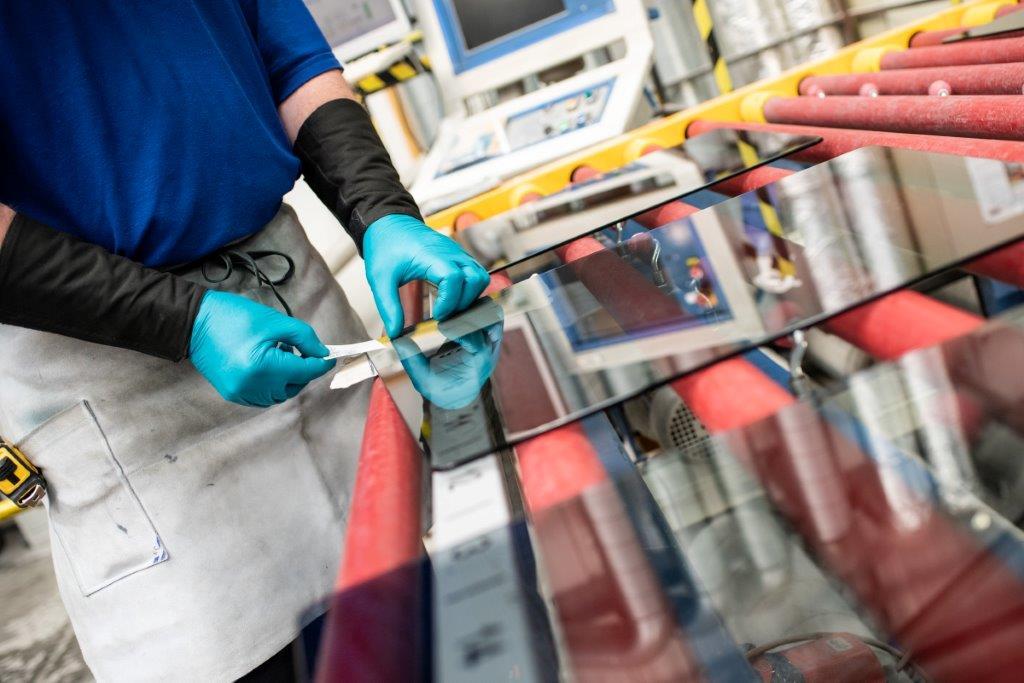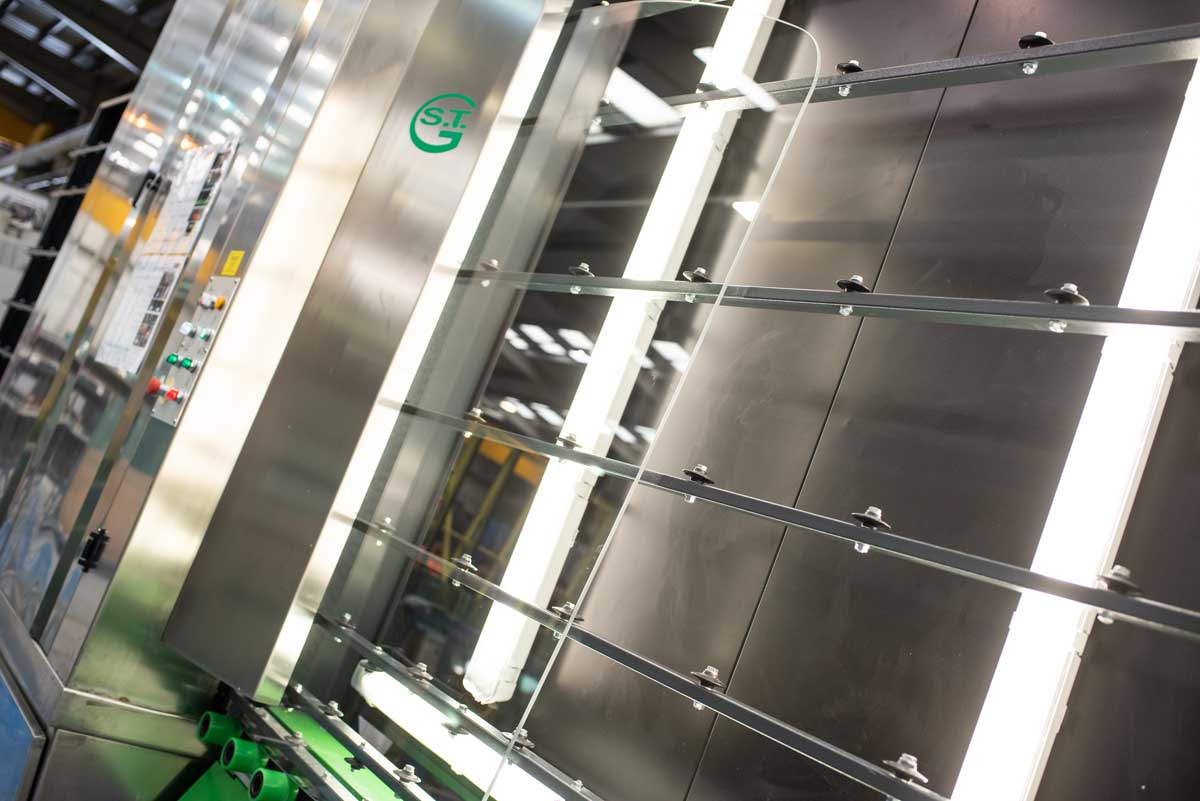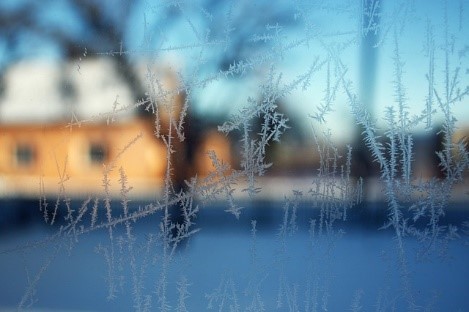.jpg)
An accident in the lab led to the discovery of laminated safety glass, a precursor to bullet-resistant glass, which has gone on to become an indispensable part of security and protection systems worldwide. Its excellent reputation has even earned it the misnomer of bulletproof glass.
Used by countless militaries, government agencies, and high-end businesses in their efforts to safeguard their staff, the glass has become a common sight. It has been adapted for both buildings and vehicles, and you can find it installed in a wide variety of locations, from embassies and casinos to limousines and military Humvees.
From an accidental discovery to a global safety standard
The story of its origin, like many revolutionary inventions, is one of complete accident. In 1903, the French chemist Edouard Benedictus was working in his laboratory when he accidentally dropped a beaker coated in plastic nitrate from a previous experiment. When the beaker didn’t shatter into pieces, and more or less kept its form, it inspired Benedictus to develop the idea, and in 1909, he secured the first patent for laminated safety glass in France. In 1914, he was successfully granted a patent in the USA. The first half of the 20th century saw the glass being integrated into the military for the first time, with a notable use being the eyeglasses of gas masks during World War I. By World War Two, glass technology had advanced far enough to see the manufacture of laminated glass that could resist bullets. This glass was implemented in the windows of military vehicles during the war to protect troops from enemy bullets. Other industries also bought into the strengthened version of the glass, such as government agencies, who equipped important buildings, such as the White House, with the glass. Commercial enterprises also saw the potential of the product, with banks and casinos combining it with voice-transmission systems to ensure the safety of their tellers when communicating with customers.
The incredible science behind bullet-resistant glass
When Edouard Benedictus stumbled across laminated glass, it had nowhere near the strength and toughness that bullet-resistant glass has today. The original beaker was coated on its inner with plastic cellulose nitrate, which dried and created a kind of film that led to the broken pieces remaining together and not shattering when impacted. The glass that earned him his first patent was an improvement of this original discovery, and consisted of two pieces of glass bonded together with a layer of celluloid. The result was a more resistant surface that, like the beaker, broke but maintained its form.
Since then, laminated glass has evolved to take on numerous new properties as technology and manufacturing practices become more advanced. The development of stronger glass, tougher plastic, and new layering techniques has seen the creation of new glass that is robust enough to be billed as bullet-resistant. So, what is the glass of today made from? And how does it protect someone from a speeding bullet?
The anatomy of bullet-resistant glass
Modern bullet-resistant glass generally consists of multiple layers of laminated glass and a type of thermoplastic, which are sandwiched together to form what appears to be a single sheet of glass that may be inches thick. The panes of glass may be subjected to thermal or chemical treatments during the manufacturing stages in a strengthening process known as toughening. This also makes it safer when it breaks, as tempered glass will crumble into smaller chunks rather than break into jagged shards.
The thermoplastic layer is usually made from a tough but malleable material, which is sandwiched between the glass layers. Older versions of bullet-resistant glass used polyvinyl butyral (PVB), which required several dense layers to be effective, often leading to panes that were very thick and also very heavy. More recent models of bullet-resistant glass have tended to include polycarbonate in their composition, mostly due to its superior toughness and lighter weight. This has allowed companies to produce glass that is thinner and lighter than conventional laminates.
The plastic layers perform a very different job to the glass layers. When a bullet is fired, the much harder glass layers of laminated glass are designed to receive the brunt of the force, flattening the bullet as it travels through the glass. The plastic deforms which absorbing the energy and preventing the bullet from travelling any further. The energy of the impact is distributed outwards across the area of the pane, with the combination of multiple layers and large surface area meaning that the bullet’s energy is divided across the whole sheet, causing it to lose its forward momentum.
The plastic layers also perform the original trick that Edouard Benedictus stumbled across with his broken beaker: keeping the whole pane in one piece, instead of shattering.
One factor that glass manufacturers also need to be wary of when testing their glass is the production of spall upon the bullet’s impact. Spall is the term given to fragments of glass that can be ejected from the reverse of the glass after the bullet has struck. These fragments are an often undesirable quality in bullet-resistant glass, as they can cause injury if someone is located near the glass’s surface. To reduce or eliminate spall, manufacturers often use polycarbonate or polyester rear layers intended to remain intact under impact.
Choosing the right glass for the threat level
Bullet Resistant Armoured VehicleFor someone looking to install bullet-resistant glass windows or walls, or include it in a vehicle, it is essential that they select glass with a rating able to defeat the level of threat that they are likely to face. For example, military vehicles will face a higher threat level than civilian vehicles, so they should choose thicker and stronger bullet-resistant glass.
To ensure that all bullet-resistant glass is subjected to the same tests and that the same ratings are issued, standards have been put in place that bullet-resistant glass must conform to. Europe and the USA each have their standards. In Europe, the relevant standards are EN 1063 and were set out by the European Committee of Standardisation, while in the USA, the relevant standards are NIJ 0108 and UL 752. The standards are similar, but should not be confused with one another.
The European EN 1063 standard has seven classes for small arms fire (BR1 to BR7), and two for shotguns (SG1 and SG2). To achieve a particular rating, a pane of glass must be able to stop a specified number of shots, all fired within 120mm of each other, without shattering. The following table details the specific details of each test level.
Glass is also judged on the amount of spall produced during the testing. To achieve a no-splinter (NS) categorisation, the glass must stop the projectile(s) specified by the standard without the inner layer being perforated, and no spall must be evident on the witness plate after impact. The witness plate is an ultra-thin layer of foil used in testing that any spall will mark or pass through it when ejected from the glass. Glass that does produce spall is assigned a splinter (S) categorisation.
As a glass product moves up the threat levels, the type of firearm and ammunition escalates in power, so the higher the level the glass succeeds in attaining, the stronger the glass is deemed to be.
Dellner Glass's bullet-resistant glass
Here at Dellener Glass, we have been in the glass solutions industry since 1943, and we began manufacturing our bullet-resistant glass in 1976, making 36mm and 42mm glass laminates. Today, we continue to develop innovative glass solutions, working to accommodate different materials and thicknesses to achieve new levels of strength for maximum threat resistance.
Our bullet-resistant glass products have been utilised in a variety of important places and roles. They have been integrated into the architecture of numerous high-risk sites, like military installations, government buildings, embassies, and VIP residencies in locations spread around the globe. They have also been used in many protective vehicles, such as cash-transfer vans, armoured personnel carriers, and limousines.
The glass is produced by our expert staff using advanced glass manufacturing equipment, including a number of temperature- and humidity-controlled ‘clean rooms’ to ensure that the glass created is of the highest quality. Our manufacturing process is second to none, and a testament to this is the full certification to ISO9001 that we have received.
We produce two types of bullet-resistant glass: low-spall and no-spall (NS). Both of our bullet-resistant glass products are tested to EN1063, and the company produces thicknesses of glass that cover all of the threat levels set out by the standard. Our low-spall product is ideal for locations where there is a stand-off distance from the glass, such as high-end storefronts or isolated protective barriers.
Our no-spall glass is the toughest bullet-resistant glass that we produce. The glass makes use of polycarbonate, a very strong glazing material that possesses a resistance factor many times greater than regular toughened glass. By combining polycarbonate layers with layers of conventional glass, we have produced a glass that produces no spall when impacted by a projectile. The use of polycarbonate harbours other advantages, with the material being much lighter than other plastics to allow for a product that weighs less and is 40% thinner than the low-spall product. It also provides improved light transmission and glass clarity, as well as enhanced low-temperature performance. Our no-spall option ranges from 13mm to 74mm in thickness.
We test each of our products and work on research and development projects at our on-site firing range. After in-house testing, the glass products are sent to a local company that carries out accredited testing so that the threat-level resistance can be officially certified.
If you would like to know more or have any questions about our bullet-resistant glass, you can get in touch with us, and we will be happy to help.



